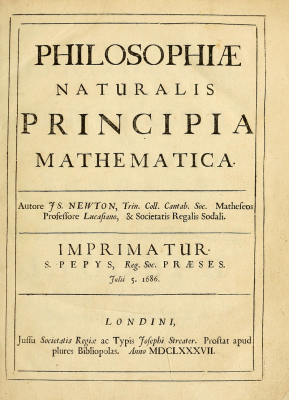Isaac Newton published the Mathematical Principles of Natural Philosophy, more commonly known as the Principia, in 1687. It contains the laws of motion, where he discussed how an object is affected by the forces acting on it, and the law of universal gravitation, where he explained the behavior of planets around the sun. The Principia eventually became the foundation of a mechanistic view of the solar system.
Laws of Motion
Newton began by explaining the three laws of motion. The first states that an object at rest will stay at rest unless a force acts on it, and an object in motion will remain in motion unless a force acts on it. We see this law in our everyday lives. For example, a table stays in place unless somebody pushes it or a rolling ball only stops rolling when somebody puts their foot on it.
The second law says that an object moves towards the direction where the force moves it and that the mass of the object affects how fast it moves. This means that if a person pushes a table towards the door, the table will move towards the door and not away from it. Also, if the table is heavy, it will not move as quickly, as it would require a much stronger push from the person.
The third law says that for every action, there is an equal and opposite reaction. If a person lifts a jug of water, the person uses a force that pushes up the jug, while the weight of the it pushes down against the lifter’s arms, down to his legs, and onto the floor. Boxers know this opposite force very well, as every time they land a powerful punch to the opponent’s face, the force (or impact) ripples back up to their arms.
Law of Universal Gravitation
Newton then proceeded to explain his law of universal gravitation, which says that the force of gravity between two massive objects is much greater than the force of gravity between two less massive objects. Newton explained further that an object with more mass exerts more pull than objects with less mass. This is why apples fall to the ground, and people do not float towards the clouds.
The law of universal gravitation also says that the force of gravity decreases as the distance between objects increases and that it increases when two objects are closer to each other.
Newton applied the law of universal gravitation to large objects such as the sun, moon, and planets of the solar system. He discovered that the moon goes around Earth and does not float away because it is held by Earth’s much stronger pull. The same thing happens to all the planets orbiting the much larger sun, including comets.
Newton added that the ocean tides are caused by the moon and the sun’s gravitational pull. In effect, Newton’s Mathematical Principles of Natural Philosophy helped people understand that the universe is controlled by a network of gravitational pulls.
